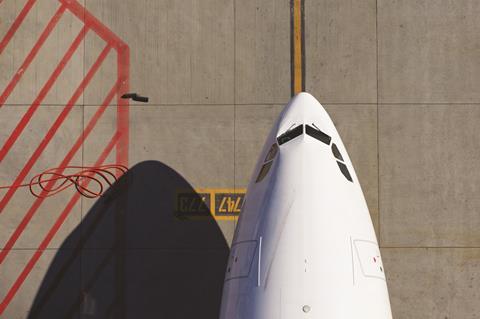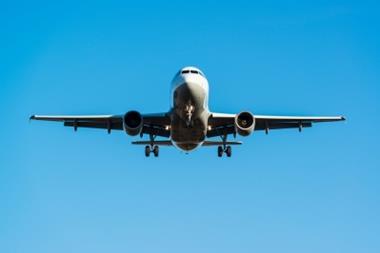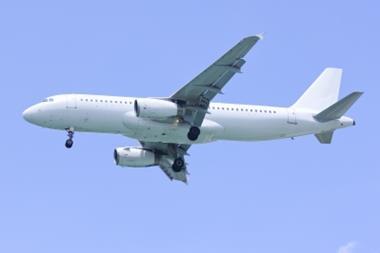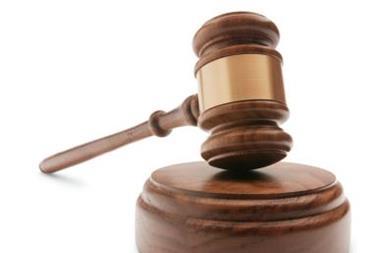The loss of Flight MH370 raises the question of the legal and risk implications surrounding aviation incidents

Major aircraft losses are thankfully a rare occurrence in the age of modern civil aviation; however the disappearance of Flight MH370 provides a timely reminder of the risks and legal implications associated with aviation incidents. It is difficult to believe that some months after the loss of MH370, there are still no further answers as to what occurred, what happened to all the passengers on board and how it happened. We may never know the exact circumstances surrounding the aircraft’s disappearance, but other implications must also be considered while the investigations take place.
Legal aspects of aircraft accident investigation
Annex 13 of the Chicago Convention 1944 provides for the international standards and recommended practices in relation to aircraft accident and incident investigation. The objective of the investigation is defined within the annex as being the “prevention of accidents and incidents. It is not the purpose of this activity to apportion blame or liability”.
The state of occurrence (that is, the country where the aircraft accident took place) generally leads any accident investigation process. The state of registry (where the aircraft is registered), the state of the operator (that is, where the airline is based), the state of design or state of manufacture can make requests during the investigation process. However, it is worth noting that the operator does not have an automatic right to be included within the investigation process. Typically, any airline involvement is carried out through the state of the operator (that is, the local Air Accident Investigation Bureau within the airline’s jurisdiction), but there is no legal requirement for this to occur.
Within the EU, Regulation 996/2010/EC was implemented in an attempt to standardise air accident investigations among Member States. The regulation supports Annex 13, although it also brought into force additional measures, such as the right of the investigator to involve the European Aviation Safety Agency in the investigation process.
Additional measures are also provided for family assistance and the right of a family representative to participate in the process. The regulation mandated the formation of ‘The Network’, which is made up of the civil aviation authorities of each Member State, in an effort to implement the principles of the regulation across the EU. The regulation is currently under review and amendment proposals are awaited.
In relation to MH370, the investigation process shows that it is unclear what/where the state of occurrence is. Because of the lack of information surrounding the aircraft’s whereabouts and where the loss occurred, the Malaysian authorities took charge of the investigation process at the outset. In addition, there has been significant international involvement, including on the part of Australia, the US, China and various other jurisdictions, owing to the unprecedented circumstances of this incident. Some 25 countries are involved in the search and rescue operation with no discernible information as to where the aircraft was lost.
Some unusual activities have taken place during this investigation process, particularly when dealing with the families and the method of mass notification by text message. This is likely to be a byproduct of the inexplicable circumstances surrounding the aircraft’s disappearance, but in addition to the investigation itself, any carrier facing a similar situation must also maintain a good handle on its reputation at all times. This could make all the difference between the airline continuing or going out of business in the aftermath of the incident. As a matter of course, it is important to remain mindful of the fact that news is now provided in real time and, owing to social media, often before authorities have the information to hand.
Passenger claims
Following the major loss of an aircraft, the dependants of the deceased can make a claim against the airline in question. Aviation liability is governed by the Warsaw Convention as amended by the Montreal Convention and provides for strict liability in the case of an airline incident. Such losses are insurable and liability is unlimited unless the airline can prove that it was entirely without fault.
The Montreal Convention prescribes five jurisdictions in which a claim can be brought: the airline’s domicile or principal place of business; the place where the ticket was purchased; the place of destination or the residence of the passenger (provided that the airline travels through this jurisdiction). In addition, where claims arising outside the matrix are brought (for example, a negligence suit against a manufacturer), the parties may choose to pursue a claim in a jurisdiction linked to the manufacturer if different from those above. Lawyers spend a lot of time considering the appropriate jurisdiction. Some are known to be more plaintiff-friendly, some will be quicker or slower (either may be preferable depending on the ultimate end game) and some jurisdictions will award higher levels of damages. It is therefore not uncommon in aviation claims to see a court battle over the right to bring claims in an appropriate jurisdiction, before questions of liability and levels of damages are considered.
Claims against third parties
The Montreal Convention presents a straightforward regime governing the rights of passengers against the airline. The most interesting actions happen outside of this matrix as the airline, manufacturers and other parties (perhaps an airport or air traffic control) seek to apportion liability. Often, given the sums involved and the danger of adverse publicity, the parties will agree to arbitrate the disputed cause of loss and ultimate liability. Again, the choice of jurisdiction will be of paramount importance.
Overview of aviation insurance
Airlines are large organisations, generally with a large fleet. Although accidents are thankfully rare, the potential losses are high and so no single insurer will want to face such exposure. Airline insurance is therefore generally placed in a subscription market with a number of insurers subscribing to policies in different percentages, so that there can be any number of participants (10-15 is not uncommon) on a slip. The leader will generally be responsible for taking the major decisions in the management of the claim, although the other participating insurers will have a right to comment and influence the progress of the claims in varying degrees, depending on where and how the insurance is placed. A lawyer is appointed (often the firm will be specified in the policy) and the lawyer acts for both insurers and the insured to the extent of the cover provided under the policy. Each insurer has a separate contract of insurance with the insured and so, in theory, can chose to take a different course of action to that proscribed by the leader and/or recommended by the lawyer. In practice, however, their interests are naturally aligned and this rarely happens.
Commercial/contractual issues in the context of aviation accidents
As well as dealing with the aftermath and tragedy of a major aircraft loss, any airline/carrier must consider their business continuity and commercial options. Following a major aircraft loss and particularly in a total loss situation, if an aircraft is leased, dialogue has to be entered into between the lessor and the lessee for the purposes of terminating the lease. Despite the fact that the aircraft is in essence completely ‘written off’ and not in use, it is still incumbent on the carrier to properly terminate the lease.
It is also worth considering whether termination payments are due to the lessor in addition to any break funds for the early termination of a lease. Typically, lessors are sympathetic in the face of a major loss, however, the carrier must continue to be diligent and conclude its business affairs with any lessors or related suppliers in order to preserve its position.
A number of other commercial items should be considered, including the potential to wet lease a replacement aircraft until such time as a suitable alternative can be found, the need to put passengers on alternative carriers where the loss of the aircraft has severely affected the day-to-day operation of the airline.
Finally, the single largest issue that is still faced on a regular basis is the need to protect the brand. It is important to ensure that any spokespersons are properly trained, including the appropriate board members who may be called upon to provide further information as and when required. In the absence of preparation, an airline could find itself without a business following a major aircraft loss if support for its services is not available going forward.
Criminalisation
A growing trend in civil aviation incidents has seen airline officials and engineers facing criminal prosecution as a result of an airline accident. Throughout the investigation process, particularly in the EU, a parallel criminal investigation is opened at the same time.
Although one would imagine that the authorities would be working closely together in terms of providing useful information that may assist both parties, typically, this does not happen, and the civil and criminal authorities overlap significantly. Furthermore, the criminal investigation can take precedence over a civil investigation of the incident even though it is difficult to discuss any criminal liability until such time as the reasons behind the accident have been uncovered.
Criminal prosecutions are generally not insurable under aviation liability policies, although directors’ and officers’ liability Insurance (D&O) can be purchased in order to pay for the cost of a legal defence. It should be noted that D&O insurance will not cover the costs of any fines payable if the defendants are found guilty.
The prospect of a criminal prosecution is a sobering thought for any senior official in an airline. In addition, employees (such as engineers) who have no discernible managerial status or oversight can find themselves caught up in the aftermath of any incident and may also be liable to prosecution. This occurred in the Helios Airways and Spanair incidents which saw engineers facing prosecution in both instances.
It is also worth noting that the legal defence costs involved in a criminal prosecution can amount to hundreds of thousands, if not millions, of euros. If no insurance cover exists to pay for the costs of a defence, an individual facing prosecution will be liable to pay this cost unless the airline agrees to fund it (assuming it is in a financial position to do so).
Joanna Kolatsis and Saleema Brohi lead the aviation team at Hill Dickinson LLP




















No comments yet